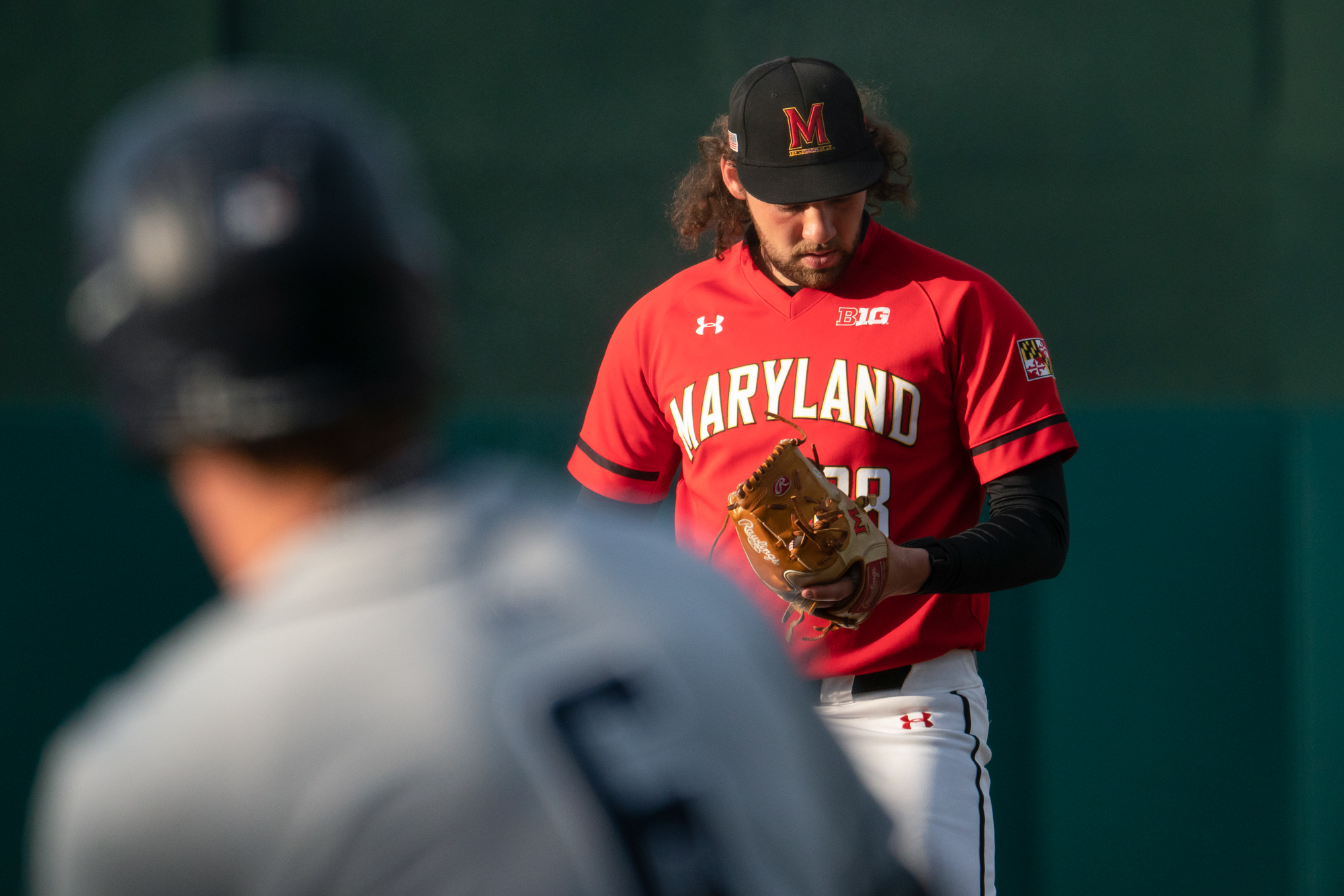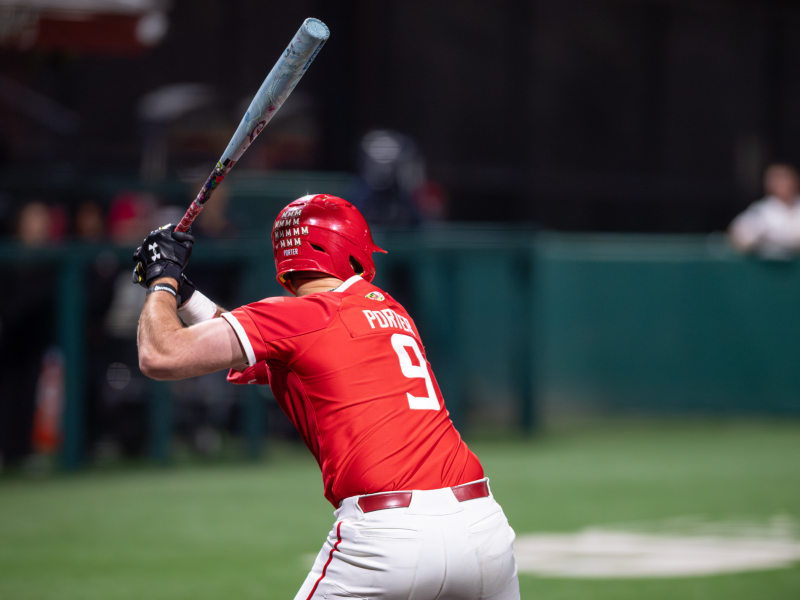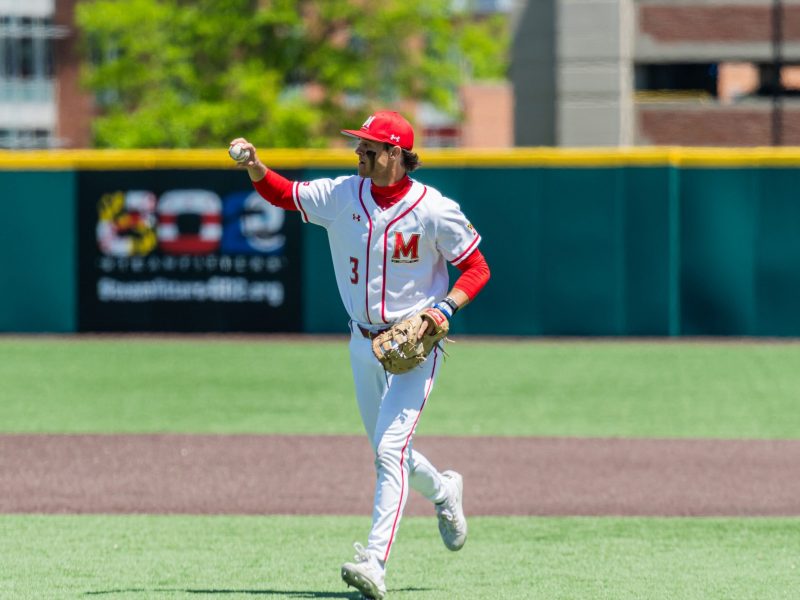David Falco Jr. was trusted to preserve a one-run lead in Maryland baseball’s Big Ten opener, entering the mound in the bottom of the ninth and eyeing his second save of the season. He started with a strikeout, but a pair of walks issued gave Iowa hope. It became Falco’s job to squash it.
His first pitch to Michael Seegers got the hitter to ground out, giving the Terps the outing they needed to start conference play with a win. But before Falco tossed the final pitch — before all of his pitches that inning — he momentarily glanced down at the device that wraps around his left wrist.
Until this season, Maryland pitchers have been told what to throw by the catcher, who relayed via hand signal the call that was given to them by a coach in the dugout.
Those commands now reach pitchers directly. The Terps debuted a PitchCom system this season, the same company and software that’s swept across Major League Baseball in recent years. It streamlines the communication from pitching coach Mike Morrison, who mans the system, to the mound.
Its impact is felt across the diamond.
[Maryland baseball hits four home runs in high-scoring 10-9 win over No. 25 Iowa]
“The tempo of the game, the tempo that the pitchers get in, is a lot more efficient,” catcher Luke Shliger said.
The NCAA unveiled new rules this season designed to speed up the pace of games, most notably enforcing a strict pitch clock and limiting the number of times a pitcher can disengage. Coach Rob Vaughn knew he needed to make calling pitches more efficient to adhere.
Morrison and past pitching coaches previously spoke to catchers through an earpiece, giving them a sign to flash to pitchers. It was a lengthy process, allowable in seasons past with no pitch clock, that also opened the door for opponents on second base trying to decipher signs.
“Some of these teams that have armies of managers will sit there and watch video until they pick your signs,” Vaughn said. “It kind of eliminates that.”
Major League catchers have control over calls with their own control board. For Maryland, Morrison mans the device.
In the moments after a pitch, the coach clicks which one he wants to see next and the location. Catchers still don an earpiece for one-way communication with Morrison, which he will occasionally use to give catchers additional instructions like where to set up behind the plate.
“It kinda became a combat-the-clock thing,” Vaughn said. “It also eliminates cross ups and missed signs, which is kind of an added bonus.”
[Maryland baseball knew Kyle McCoy would be a starter. He became one sooner than expected.]
Maryland’s PitchCom system is more complex than its opponents’. Most systems communicate through code, vibrations or numbers only. The Terps’ displays text on a wristband similar in nature to a smart watch and displays information that helps more than pitchers and catchers, according to Vaughn.
They’re worn by every infielder. Morrison can alert first baseman Eddie Hacopian when a pickoff attempt is coming. Nick Lorusso, Matt Shaw and Kevin Keister can be told how to defend a bunt and what runners to prioritize in any situation. Phrases such as “inside move,” “daylight at second” and “catcher control to first” can show on players’ wristbands for brief moments.
“It keeps the pace of the game pretty quick,” Lorusso said. “Allows us as defenders, especially infielders, to maybe time different pitches differently.”
The sweeping changes to Maryland’s pitch-calling operation have been well received. Issues are rare, and the adjustment period was short.
Like everyone else, it’s Morrison’s first time using a system like this. His old ways of calling pitches are over, days the pitching coach can’t imagine going back to.
“I’m never gonna coach a game without this thing ever again,” Vaughn recalled Morrison telling him.



